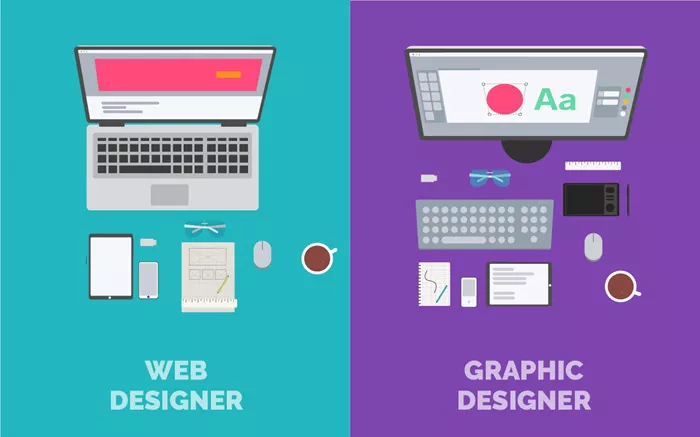In today’s digital landscape, responsive web design (RWD) is often heralded as the gold standard for creating adaptable, user-friendly websites. The concept, which allows a website to adjust its layout and content based on the device and screen size, has transformed how we approach web development. However, while responsive design offers numerous advantages, it is not a one-size-fits-all solution. There are scenarios where traditional fixed or adaptive web design approaches might be more suitable. This article explores the limitations of responsive web design and outlines when it might be better to consider alternative strategies.
1. Complex Applications with Specialized Interfaces
Responsive web design excels at creating flexible layouts for content-focused websites, but when it comes to complex web applications with specialized interfaces, it may fall short. For instance, enterprise-level software or intricate data dashboards often require a highly tailored user interface (UI) to manage and display vast amounts of information efficiently.
Example: Consider a financial trading platform that displays real-time data across multiple panels. The user needs a specific layout to monitor various metrics simultaneously. In such cases, a responsive design might lead to cluttered or confusing interfaces when scaled across different devices. An adaptive design approach, where different layouts are created for different devices, might provide a clearer and more efficient user experience.
2. Performance Constraints on Mobile Devices
Responsive web design is based on the idea that a single website should work well across all devices. While this concept is advantageous for general browsing, it can lead to performance issues on mobile devices. A responsive website may load all elements—whether visible or not—resulting in slower load times and higher data usage, which is especially problematic in regions with limited internet speeds.
Example: A news website that uses large, high-resolution images and extensive multimedia content might perform poorly on mobile devices under a responsive design. The site could benefit from an adaptive approach that serves lighter, optimized content specifically designed for mobile users, thus enhancing performance and user experience.
3. Unique Branding and Marketing Strategies
Branding is a crucial aspect of any business, and some brands have highly specific requirements for their online presence. Responsive web design may sometimes undermine unique branding elements due to its generalized approach to layout adjustments.
Example: A luxury fashion brand might want to create a highly immersive experience that aligns with its exclusive image. Responsive design’s uniform approach could dilute the brand’s identity, as it might not effectively convey the intended high-end aesthetic across all device sizes. In such cases, a custom design approach, tailored separately for desktop and mobile experiences, can preserve the brand’s uniqueness and offer a more controlled user experience.
4. Legacy Systems and Compatibility Issues
Certain industries and organizations rely on legacy systems that have specific requirements for web compatibility. For these systems, a responsive design may not integrate seamlessly, causing functionality or compatibility issues.
Example: Government agencies or large corporations that use outdated content management systems (CMS) or internal tools may face difficulties implementing responsive designs due to their existing infrastructure. In such scenarios, maintaining a fixed or adaptive design that aligns with the legacy system’s specifications may be more practical and less disruptive.
5. Specialized Device Requirements
There are cases where specific devices or screen sizes necessitate tailored design solutions rather than a responsive approach. Devices with unique form factors or functionalities might not be adequately supported by a responsive design strategy.
Example: Interactive kiosks or digital signage often have fixed screens with unique resolutions and touch interfaces. Designing a responsive website for such devices could lead to poor usability or ineffective content presentation. Creating a dedicated design optimized for these specific devices ensures better user interaction and content display.
6. Content That Requires a Fixed Layout
Certain types of content are inherently better suited to fixed layouts. When content requires precise positioning and layout control, a fixed design might be more appropriate.
Example: A visual-heavy portfolio website, such as one showcasing artwork or photography, may benefit from a fixed layout that maintains the integrity of the visual presentation. Responsive adjustments might distort or alter the content in ways that detract from its intended impact. A fixed design ensures that the content remains consistent and visually appealing across all devices.
7. Resource Constraints and Complexity
Implementing a responsive design can be resource-intensive, requiring significant development and testing to ensure that the site works seamlessly across various devices. For smaller projects or teams with limited resources, this complexity might not be feasible.
Example: A small business with a limited budget might find the costs associated with developing and maintaining a responsive website prohibitive. In such cases, a simpler fixed or adaptive design might offer a more manageable and cost-effective solution, allowing the business to focus on core functionalities without overextending its resources.
See Also The Best Web Design Course
Conclusion
While responsive web design offers many benefits, it is essential to recognize its limitations and understand when alternative design strategies may be more effective. Complex applications, performance constraints on mobile devices, unique branding requirements, compatibility issues with legacy systems, specialized device needs, fixed content layouts, and resource constraints are all factors that can influence the choice of design approach.
Ultimately, the key to successful web design is to evaluate the specific needs and goals of the project and choose a design strategy that best aligns with those requirements. By understanding when not to use responsive web design and exploring other options, you can ensure a more tailored, efficient, and effective user experience.
You Might Be Interested In
- What Is Material Design In Web Development
- The Best Web Design Software for Beginners: A Complete Guide
- How Multiple Screen Resolutions Affect Web Design

